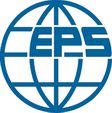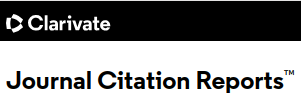Effect of arsenic doping on structural and electronic properties of MoSe2 monolayer: an ab initio study
DOI:
https://doi.org/10.5488/cmp.27.43602Keywords:
transient metal dichalcogenides, density functional theory, electronic structure, dopingAbstract
In this paper, we studied the structural and electronic properties of MoSe2 monolayer in its pure and doped forms, using the density functional theory (DFT), and the calculations were performed using Quantum Espresso (QE) software package. The doped systems are a MoSe2 monolayer with a vacancy in Mo site (Mo vacancy system), the MoSe2 monolayer with an As atom as substitutional for Mo atom (As(Mo) doped system) and an MoSe2 monolayer with As atom in an interstitial site in the hollow location of the center of one ring of the structure between the plane Mo atoms and the plane containing Se atoms (As interstitial system). We calculated the formation energy of various structures studied in Se-rich condition. We found that the As(Mo) doped system is a favorable configuration, whereas the As interstitial system is metastable. Different defects introduce midgap levels, which were interpreted according to the orbitals involved in their formation using the analysis of the band structure and DOS and PDOS of each system. The energy gap increases in all system structures and its value ranged between 1.5 eV and 1.73 eV, the Fermi level shifts toward the valence band for the Mo vacancy system, and As(Mo) doped system which suggests that it can be a p-type semiconductor, whereas Fermi level shifts to the conduction band for As interstitial system and suggests a n-type semiconductor behavior. The obtained results enable us to predict the possibility of using these systems in many applications, since it can be used in the As(Mo) doped system in photocatalysis or in photovoltaic applications in the visible light, and As interstitial system can be used in electronics applications in the infrared field.
References
Neto A. C., Guinea F., Peres N. M., Novoselov K. S., Geim A. K., Rev. Mod. Phys., 2009, 81, No. 1, 109. DOI: https://doi.org/10.1103/RevModPhys.81.109
Haldar S., Vovusha H., Yadav M. K., Eriksson O., Sanyal B., Phys. Rev. B, 2015, 92, No. 23, 235408.
Paul J., Singh A., Dong Z., Zhuang H., Revard B., Rijal B., Ashton M., Linscheid A., Blonsky M., Gluhovic D., J. Phys.: Condens. Matter, 2017, 29, No. 47, 473001. DOI: https://doi.org/10.1088/1361-648X/aa9305
Bolotin K. I., Sikes K. J., Hone J., Stormer H., Kim P., Phys. Rev. Lett., 2008, 101, No. 9, 096802. DOI: https://doi.org/10.1103/PhysRevLett.101.096802
Luo Y., Liu Q., Yang L., Yan Y., Quim. Nova, 2022, 45, 654–658.
MaJ.-J., Zheng J.-J., LiW.-D.,Wang D.-H.,Wang B.-T., Phys. Chem. Chem. Phys., 2020, 22,No. 10, 5832–5838. DOI: https://doi.org/10.1039/D0CP00047G
Menezes M. G., Ullah S., Phys. Rev. B, 2021, 104, No. 12, 125438. DOI: https://doi.org/10.1103/PhysRevE.104.054201
Nair R. R., Blake P., Grigorenko A. N., Novoselov K. S., Booth T. J., Stauber T., Peres N. M., Geim A. K., Science, 2008, 320, No. 5881, 1308–1308. DOI: https://doi.org/10.1126/science.1156965
Koós A. A., Vancsó P., Szendro M., Dobrik G., Antognini Silva D., Popov Z. I., Sorokin P. B., Henrard L., Hwang C., Biró L. P., Tapasztó L., J. Phys. Chem. C, 2019, 123, No. 40, 24855–24864. DOI: https://doi.org/10.1021/acs.jpcc.9b05921
Gao D., Xia B., Wang Y., Xiao W., Xi P., Xue D., Ding J., Small, 2018, 14, No. 14, 1704150. DOI: https://doi.org/10.1002/smll.201704150
Kolobov A. V., Tominaga J., From 3D to 2D: Fabrication Methods, Springer International Publishing, Cham, 2016, 79–107. DOI: https://doi.org/10.1007/978-3-319-31450-1_4
Zhang K., Robinson J., MRS Adv., 2019, 4, No. 51–52, 2743–2757. DOI: https://doi.org/10.1557/adv.2019.391
Ayesh A. I., Phys. Lett. A, 2022, 422, 127798. DOI: https://doi.org/10.1016/j.physleta.2021.127798
Khan Z. H., Emerging trends in nanotechnology, Springer, 2021. DOI: https://doi.org/10.1007/978-981-15-9904-0
Liang B., Li W., Ren Q., Zhu C., Li J., Results Phys., 2022, 42, 105978. DOI: https://doi.org/10.1016/j.rinp.2022.105978
Zhang D., Li Q., Li P., Pang M., Luo Y., IEEE Electron Device Lett., 2019, 40, No. 4, 616–619. DOI: https://doi.org/10.1109/LED.2019.2901296
Yang J., Zhu J., Xu J., Zhang C., Liu T., ACS Appl. Mater. Interfaces, 2017, 9, No. 51, 44550–44559. DOI: https://doi.org/10.1021/acsami.7b15854
He J., Liu G., Zhang C., Wang Y., Zhang G., Micro Nanostruct., 2023, 180, 207612. DOI: https://doi.org/10.1016/j.micrna.2023.207612
Zhao Y., Wang W., Li C., He L., Sci. Rep., 2017, 7, No. 1, 17088. DOI: https://doi.org/10.1038/s41598-017-16157-z
Giannozzi P., Baroni S., Bonini N., Calandra M., Car R., Cavazzoni C., Ceresoli D., Chiarotti G. L., Cococcioni M., Dabo I., et al., J. Phys.: Condens. Matter, 2009, 21, No. 39, 395502. DOI: https://doi.org/10.1088/0953-8984/21/39/395502
Perdew J. P., Burke K., Ernzerhof M., Phys. Rev. Lett., 1996, 77, 3865–3868. DOI: https://doi.org/10.1103/PhysRevLett.77.3865
Monkhorst H. J., Pack J. D., Phys. Rev. B, 1976, 13, 5188–5192. DOI: https://doi.org/10.1103/PhysRevB.13.5188
Murnaghan F. D., PNAS, 1944, 30, No. 9, 244–247. DOI: https://doi.org/10.1073/pnas.30.9.244
Prucnal S., Hashemi A., Ghorbani-Asl M., Hübner R., Duan J., Wei Y., Sharma D., Zahn D. R., Ziegenrücker R., Kentsch U., Krasheninnikov A. V., Helm M., Zhou S., Nanoscale, 2021, 13, No. 11, 5834–5846. DOI: https://doi.org/10.1039/D0NR08935D
Vinturaj V., Yadav A. K., Jasil T., Kiran G., Singh R., Singh A. K., Garg V., Pandey S. K., Bull. Mater. Sci., 2023, 46, No. 3, 121. DOI: https://doi.org/10.1007/s12034-023-02963-x
Kumar A., Ahluwalia P., Eur. Phys. J. B, 2012, 85, 1–7. DOI: https://doi.org/10.1140/epjb/e2012-30070-x
Ramasubramaniam A., Phys. Rev. B, 2012, 86, 115409. DOI: https://doi.org/10.1103/PhysRevB.86.115409
Zhang Y., Chang T.-R., Zhou B., Cui Y.-T., Yan H., Liu Z., Schmitt F., Lee J., Moore R., Chen Y., Lin H., Jeng H.-T., Mo S.-K., Hussain Z., Bansil A., Shen Z.-X., Nat. Nanotechnol., 2014, 9, No. 2, 111–115. DOI: https://doi.org/10.1038/nnano.2013.277
Zhao Y., Ren Y., Coileain C. O., Li J., Zhang D., Arora S. K., Jiang Z., Wu H.-C., Appl. Surf. Sci., 2021, 564, 150399. DOI: https://doi.org/10.1016/j.apsusc.2021.150399
Zhong M., Shen C., Huang L., Deng H.-X., Shen G., Zheng H., Wei Z., Li J., npj 2D Mater. Appl., 2019, 3, No. 1, 1. DOI: https://doi.org/10.1038/s41699-018-0083-1
Balasubramaniam B., Singh N., Kar P., Tyagi A., Prakash J., Gupta R. K., Mol. Syst. Des. Eng., 2019, 4, 804–827. DOI: https://doi.org/10.1039/C8ME00116B
Downloads
Published
License
Copyright (c) 2024 B. Bradji, M. L. Benkhedir

This work is licensed under a Creative Commons Attribution 4.0 International License.


















